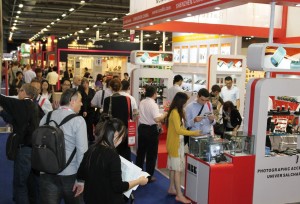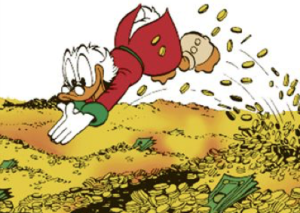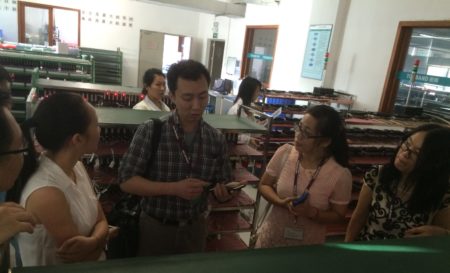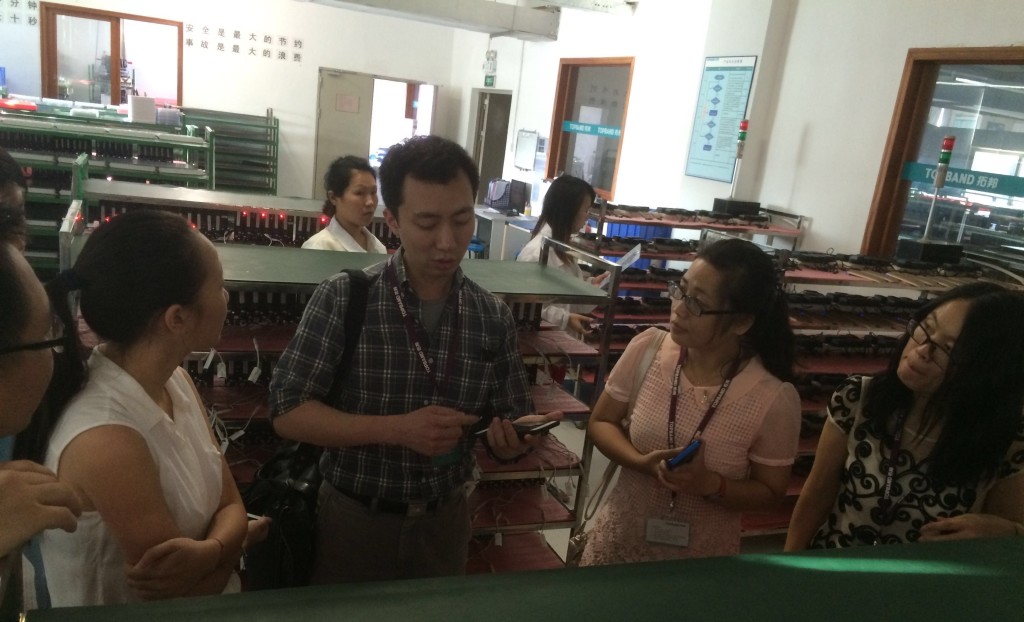We are officially in the middle of trade show season. Whether you are attending the Canton Fair or smaller regional trade shows, here is how to attend a trade show like a pro to find the right suppliers, ask the right questions, and find the right product at the right price.
If you want to cut to the chase and get my cheatsheet that summarizes “How to Attend a Trade Show Like a Pro”, please sign up for my free newsletter.

First of all you might be asking why trade shows? Aren’t they dying when you can find suppliers online? Well, do you want to own a 7-figure Amazon business? FACT: according to a 2016 survey of Amazon sellers, MULTIMILLION DOLLAR AMAZON SELLERS ARE TWICE AS LIKELY TO ATTEND TRADE SHOWS? This is according to a survey done by webretailer.com.
What does this mean? It’s not just a matter of simply showing up at the Canton Fair and finding the right supplier right away. You have to know how to ask the right questions to find the right product at the right price. In part 1 I showed you how to prepare for a trade show. Here I will review best practices AT THE SHOW and AFTER THE SHOW.
First let’s take a step back. Many of you know the 80/20 Rule or Pareto’s Principle “The law of the essential few and trivial many”.
- 80% of the world’s GDP is controlled by 20% of the people
- 80% of a company’s sales come from 20% of its products (bestsellers)
- 80% of your results come from 20% of your work
In terms of sourcing: 80% of suppliers out there are NOT the right fit for you. Your job is to find the right 20% and focus on those! Let’s call them the YES suppliers for the purpose of this article.

So let’s apply the 80/20 rule to trade show sourcing. By now you’ve already pre-registered for the show and reviewed the map so you know which halls to target so you will hit the ground running. If not, see part 1.
AT SHOW:
At the show your goal is this:
- See as much as possible in a limited amount of time
- Decide WHO are the ESSENTIAL FEW to follow up with
In other words “80/20” the suppliers and don’t waste time on the trivial many. Trade shows are huge. When I visit one, sometimes I walk 20,000 steps a day!

In fact it’s a “Meet Market” and I compare it to speed dating. Just like one of these networking events, you’re not going to talk to everyone. Use your eyes to see which suppliers may be the right fit for you first before you approach them. As I’m doing this, I keep in my head 3 buckets: “YES, NO, and MAYBE”. I ask myself “Where will I put them?”

Before we get into asking questions, first you should question yourself. I prepare a short elevator speech introducing my experience and the product category I’m in, demonstrate an ability to buy, and then a call to action where I will ask them questions. Many first time trade show goers forget about this step. In fact a proper introduction will build confidence and make suppliers more comfortable in doing business with you. This can mean revealing products not on the trade floor, lower prices, and a greater incentive to do business with you.
At the show, here are 7 questions that I ask suppliers.
- Do you manufacture [XYZ product]?
If yes, then continue. If no, thank them and move on - Are you a factory or trading company?
Many Amazon sellers prefer to work with direct factories so here are some ways to tell them apart from middlemen. Most times I ask them directly and they tell me. Another way is to look at their product selection and if there is a common theme. For example silicon product manufacturers will offer silicon baking sheets, silicon gloves, and silicon measuring cups so it makes sense they focus on one type of material. On the other hand trading companies will offer everything under the sun such as iPhone cases, USB power banks, and selfie sticks. Telling them apart is both an art and a science. I will dive deeper into this topic in the future so please signup to my free newsletter to be the first to know. - Which countries do you export to?
I call this the country test. If your marketplace is the US and the factory exports to Africa or the Middle East then BEWARE. Their quality will be about the level of a 99 cent store. In other words CHEAP. They will claim they can make better quality but this is risky. In fact their whole supply chain is configured to low quality standards from cheap raw materials, to low skilled labor, to low quality control standards, to heavy handed packaging procedures, etc. I normally select suppliers who have experience with my marketplace or similar quality level marketplaces. - What other products do you manufacture?
There are two benefits to this question. First you are double checking the common theme test to verify they are a factory. Also you can discover new product opportunities this way. Million dollar Amazon sellers report that they ask suppliers for product suggestions. - What quality control system do you have?
Depending on your product you can ask about quality control systems. ISO 9001 is one of the most common.
Beware: ISO9001 certification can be purchased and its quite common practice in China. So take this with a grain of salt. - Can you private label for me?
This is important for Amazon private labellers. It’s good to check if they can do this for you in the beginning. They will normally require a minimum order or tooling fee – both of which can be negotiated. - How much is this?
To me the price is just one variable of the supplier equation and not necessarily the most important at this time. I get an estimate first and then ask for a firm quotation by email after the show.
The CIO of a major online sourcing platform recently asked me “How do you capture this information?” When talking with suppliers, I quickly take notes in my notebook which I will use when deciding whether to follow up. First I staple their business card to the page. Then I take down the name of the person I spoke with (not necessarily the same as the name on the business card) and the main points. Also I will note their booth number. I’ve forgotten to do this before and when I tried to find them again I got totally lost. This will save a lot of time.
I also take pictures of the product and the people. I learned this trick from one of my clients. It helps a lot after you return home and are trying to figure out who’s who. Also this builds the relationship or “guan xi” as it’s an appreciated gesture.
Finally I note the next steps for follow up: questions, request for quotations, and research (e.g. Jungle scout).
Common mistakes: I’m not perfect and here are some mistakes that I’ve made over the years attending trade shows.
- Don’t fall in love too fast. Just like in speed dating there’s plenty of fish in the sea so don’t commit to anyone until you’ve walked the entire floor.
- Don’t spend too much time with unqualified suppliers. If they’re a NO supplier, thank them and move on quickly.
- Don’t spend too much time talking about pricing. Get a reference quotation first. There’s a couple reasons why. One is the salesperson does not have the authority to make a formal quotation by themselves. Normal the sales director, boss, and/or engineer needs to have a say. Also they just met you and don’t know you well enough to give you a low price.
- Don’t forget to follow up. Just like you, suppliers will have met hundreds of buyers and they may have 100 things to do after returning to their factory. Take the initiate and email them.
Once you’ve seen the entire show, leave.
POST SHOW: But wait – you’re not done yet. You need to filter and follow up.

After the show I will have a ton of business cards, notes, and catalogs. I will separate them into 3 stacks:
- YES: For Follow Up
- NO: For the trash
- MAYBE: Keep in case you need backup suppliers
So how do I manage all the emails after the show? I create a spreadsheet with the YES suppliers and their contact information, reference quotation, notes, and next steps. Then I follow up with an email template that I copy and paste. In the subject line I include their company name and product so I can quickly recognize who’s who.
Best practice: Never give them your primary email address! I create a separate email address for sourcing. Be prepared for a lifetime of Happy New Years, Merry Christmases, and endless supply of spam.
The follow up email will address these essential points leading up to a trial order:
- Request for quotation based on your specifications. Please signup to my newsletter for a free RFQ template.
- Questions about their company and product
- Arrange samples if needed
- Trial order
Here are some tricks of the trade that will get you ahead of your competitors at the trade show:
- Get there early – There will be less people on the floor and you will get more attention from suppliers
- Talk to the most senior person – I try to at least meet a sales director or manager as they have more decision making power
- Take and early/late lunch to avoid the lines
- Avoid the afternoon of the last day – Everyone will be closing down and not in the mood to talk business
- Combine your trip with other goals – Factory visits and other trade shows
- Get a VPN if visiting mainland China – Anything Google-related (Gmail, docs, maps, translate, etc), Facebook, Twitter, Instagram, New York Times, and others will be virtually inaccessible from China. More VPN info here. Make sure you get it BEFORE YOU ARRIVE. Many VPNs themselves are blocked in China.
- Don’t go out and get drunk at night – Complete rookie move
Remember you’re at work and a good trade show can be priceless. With these tactics you will be on your way to finding the right suppliers and products at trade fairs so you can own that 7-figure business and swim in your money like Scrooge Mcduck!

What’s your #1 problem when attending trade shows? Comment below and let me know.
BONUS: For a cheatsheet that summarises “How to Attend a Trade Show Like a Pro”, please sign up for my free newsletter.


